How to Grow a Carnivorous Sundew Plant
Updated: Oct. 28, 2022
Interested in growing carnivorous plants? Start with a sundew plant, which is an easier option for home gardeners to care for.
Our editors and experts handpick every product we feature. We may earn a commission from your purchases.
In the world of carnivorous plants, Venus flytraps get all the attention. But though flytraps are found pretty close to home (they’re native to North and South Carolina), they’re actually extremely challenging for the home gardener to grow, due to their demand for very specific water and light conditions. If you’d like to try growing carnivorous plants, I recommend you start with a sundew plant, which is delicate, lovely, and much easier to grow.
Sundew Plant Traps
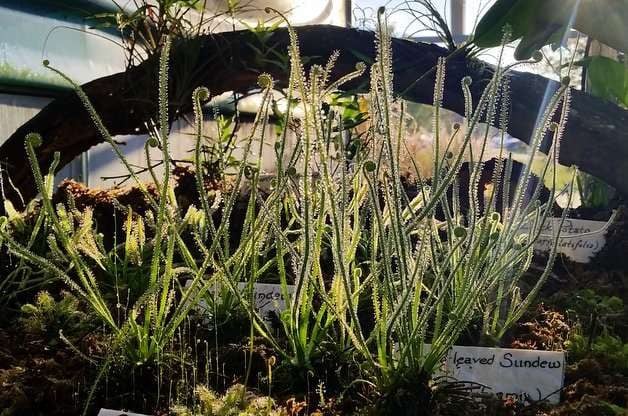
Sundews are members of the genus Drosera, and they’re found all around the world. Like many carnivorous plants, sundews generally grow in boggy conditions, usually where they also get plenty of sunlight. Sundews capture prey using what is known as a “flypaper trap.” The surface of the sundew plant is covered with tiny tentacles, each of which secretes a small drop of very sticky mucilage (glue).
Insects are drawn to the sweet scent of this mucilage, and are trapped on the plant. Digestive enzymes are then secreted to break down the insect and allow the sundew to absorb the nutrients.
Learn how to grow a carnivorous pitcher plant.
Types of Sundew Plants: Cape Sundew
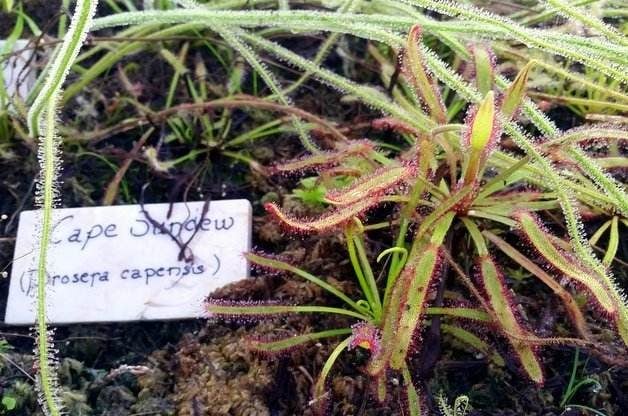
There are 8 species of sundews native to the U.S. and Canada, with the greatest variety found in the Southeast. See a complete list of native sundews, including range maps. If you’re going to try growing sundews at home, though, I recommend you start with one of the easiest and most readily available: Cape Sundew (Drosera capensis), which is native to South Africa. You’ll sometimes find sundews for sale at specialist nurseries or plant sales, but the easiest way to find them is to order online from a reputable seller. Be sure your seller is raising these plants responsibly, rather than collecting them from the wild. Poaching, along with habitat destruction, poses great threats to all carnivorous plants. California Carnivores is well-known, and a good place to start.
Check out the top 10 tropical plants.
Grow Sundews in Containers
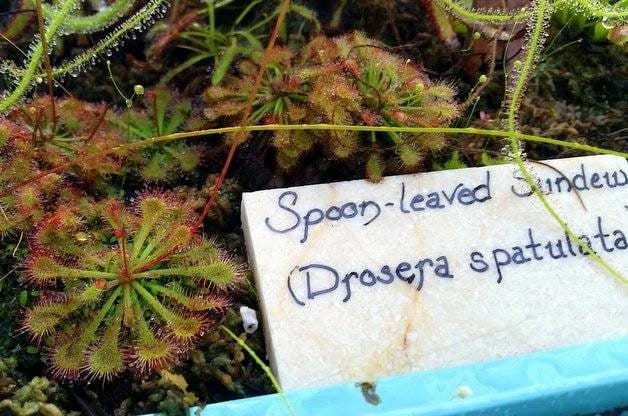
The most important things to keep in mind when growing carnivorous plants are water and light. They actually prefer poor soil, and you’re best off leaving your sundew in the pot you purchased it in. Don’t try to plant it in the ground—you’re unlikely to have the proper soil conditions in your yard. If it outgrows the pot (which will likely take several years), you can repot it carefully. Find it a nice sunny location for your plant—it needs at least 8 hours of full sun each day.
Discover easy plants you can grow in containers.
Watering Your Sundew Plant
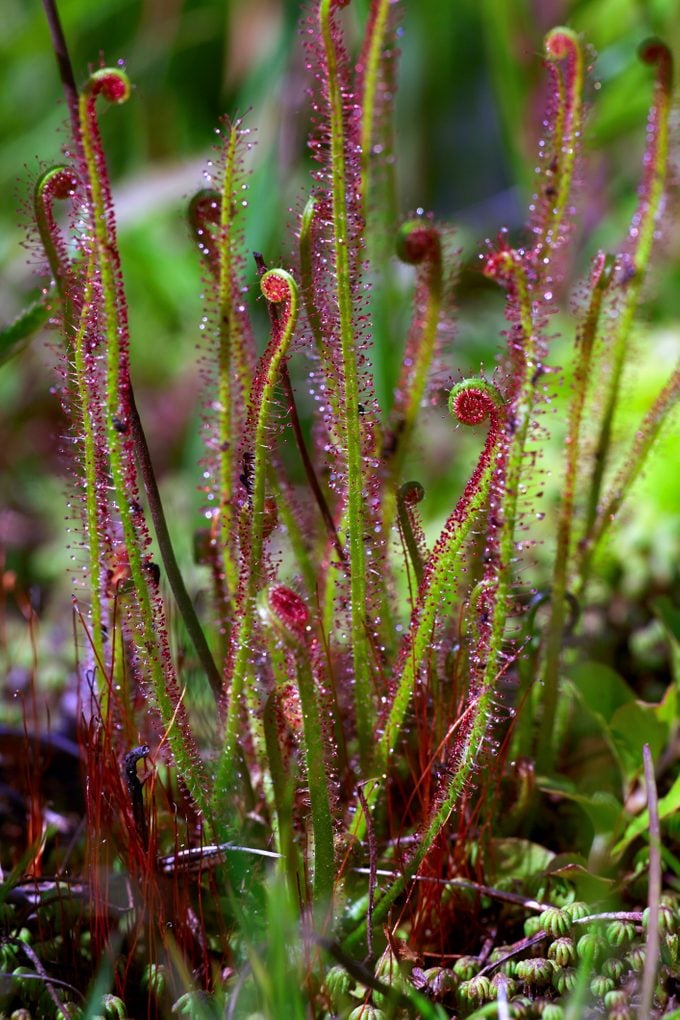
- It is essential that you use only rainwater or purified water for your sundews. Regular tapwater, well water and chlorinated water will kill your plants. If you don’t already have a rain barrel, now’s the time to install one.
- Humidity is also essential to the health of sundews. If you live in a very humid climate, like the southeast, you can grow these in containers outdoors and they will probably get the humidity they need. For everyone else, you’ll do best if you grow sundews in a terrarium.
- Sundews require consistently moist soil. The easiest way to provide the water they need is to set the pot in a shallow bowl and keep the bowl filled with water. The needed water will wick up through the potting medium to the plant’s roots.
Feeding a Sundew Plant
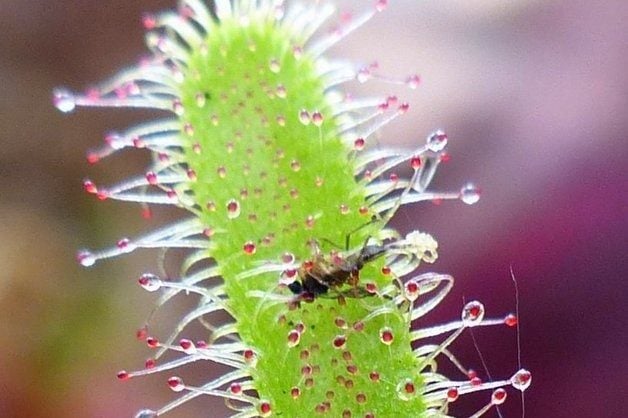
Of course, one of the most fun aspects of growing carnivorous plants is getting to feed them insects from time to time. If your plants are growing outdoors, you probably won’t really need to feed them, though—they’ll catch all the insects they need. Inside, you can feed your sundews with small ants, or even place a piece of fruit nearby to draw fruit flies, but unless they’re in a closed terrarium, they will also probably get all the nutrients they need from bugs living in your home (we all have them!)
Check out 10 seriously cool succulents that make great houseplants.
Dormancy and Flowering
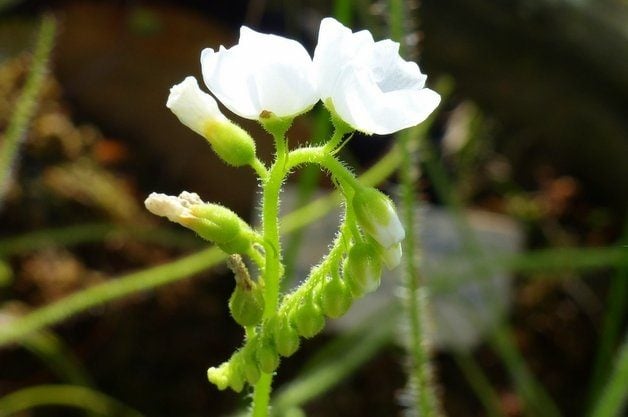
Many sundew plants experience a winter period of dormancy, and may even require it. This is why Cape Sundews make such good starter plants when growing carnivorous plants: they don’t require dormancy. In the spring, healthy sundews will produce flower stalks, which can be very lovely. The flower stalks raise high above the sticky plant leaves, since you don’t want to eat the same insects that are helping to pollinate you! You can trim the flower stalks to help encourage plant growth, or you can allow them to flower and go to seed. Many sundews re-seed readily, so expect lots of baby sundews in the future!
If you enjoy want to know more about growing sundews, you’ll need to educate yourself first. A good place to start is the book Savage Garden by Peter D’Amato, often considered the definitive handbook to growing carnivorous plants.
Be patient, and expect failures while you work out the right growing conditions. The reward will be growing some of the most unique plants around!
